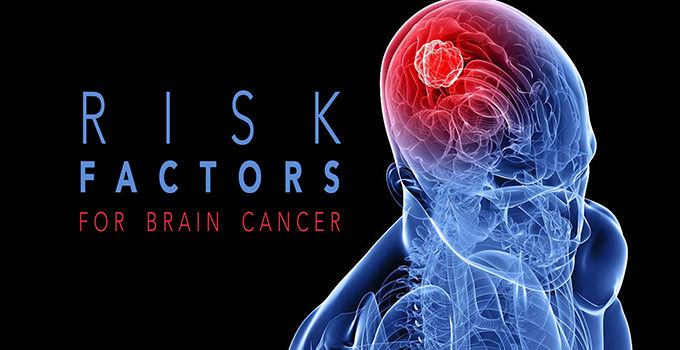

Brain Cancer Causes and Risk Factors: Why did I get a Brain Tumor?
by Zara Jethani
Originally published February 8, 2016; Updated August 29, 2024
Unfortunately there is no clear answer to this question. At this time, seeking out top neurosurgeons and high quality neuro-oncological care is the only way we have of dealing of brain, pituitary and skull base tumors. Looking at risk factors can give us some insight but nothing definitive.
The following is excerpted from Cancer.net.
A risk factor is anything that increases a person’s chance of developing a brain tumor. Although risk factors often influence the development of a brain tumor, most do not directly cause a brain tumor. Some people with several risk factors never develop a brain tumor, while others with no known risk factors do. However, knowing your risk factors and talking about them with your doctor may help you make more informed lifestyle and health care choices. At this time, there are no known ways to prevent a brain tumor.
What Causes Brain Cancer
Most of the time, the cause of a brain tumor is unknown, but the following factors may raise a person’s risk of developing a brain tumor:
Age. Brain tumors are more common in children and older adults, although people of any age can develop a brain tumor.
Gender. In general, men are more likely than women to develop a brain tumor. However, some specific types of brain tumors, such as meningioma, are more common in women.
Home and work exposures. Exposure to solvents, pesticides, oil products, rubber, or vinyl chloride may increase the risk of developing a brain tumor. However, there is not yet scientific evidence that supports this possible link.
Family history. About 5% of brain tumors may be linked to hereditary genetic factors or conditions, including Li-Fraumeni syndrome, neurofibromatosis, nevoid basal cell carcinoma syndrome, tuberous sclerosis, Turcot syndrome, and von Hippel-Lindau disease. Scientists have also found “clusters” of brain tumors within some families without a link to these known hereditary conditions. Studies are underway to try to find a cause for these clusters.
>>Pacific Neuroscience Institute note: In a study released online Feb. 5 in the journal Cancer Epidemiology, Biomarkers & Prevention, investigators found that a history of respiratory allergies, asthma and eczema was associated with a reduced risk for glioma.
>>This American Brain Tumor Association’s webinar goes into more detail about each of these risk factors particularly concerns regarding family history.
Exposure to infections, viruses, and allergens. Infection with the Epstein-Barr virus (EBV) increases the risk of CNS lymphoma. EBV is more commonly known as the virus that causes mononucleosis or “mono”. In other research, high levels of a common virus called cytomegalovirus (CMV) have been found in brain tumor tissue. The meaning of this finding is being researched. Several types of other viruses have been shown to cause brain tumors in research on animals. More data are needed to find out if exposure to infections, other viruses, or allergens increase the risk of a brain tumor in people.
Electromagnetic fields. Most studies evaluating the role of electromagnetic fields, such as energy from power lines or from cell phone use, show no link to an increased risk of developing a brain tumor in adults. Because of conflicting information regarding risk in children, the World Health Organization (WHO) recommends limiting cell phone use and promotes the use of a hands-free headset for both adults and children.
>>Pacific Neuroscience Institute note: When this issue was brought into question again, Dr. Garni Barkhoudarian, neurosurgeon at PNI reported recently that he concurred with WHO’s assessment and recommendation.
>> Electromagnetic fields are being used successfully to help treat people with glioblastoma multiforme. Recently approved by the FDA, Tumor-treating fields (TTFields) technology disrupts the cancer cells’ DNA to stop them from multiplying.
Race and ethnicity. In the United States, Caucasian people are more likely to develop gliomas but less likely to develop meningioma than African American people. Also, people from northern Europe are more than twice as likely to develop a brain tumor as people in Japan.
Ionizing radiation. Previous treatment to the brain or head with ionizing radiation, including x-rays, has shown, in some cases, to be a risk factor for a brain tumor.
Head injury and seizures. Serious head trauma has long been studied for its relationship to brain tumors. Some studies have shown a link between head trauma and meningioma, but not one between head trauma and glioma. A history of seizures has long been associated with brain tumors, but because a brain tumor can cause seizures, it is not known if seizures increase the risk of brain tumors, if seizures occur because of the tumor, or if anti-seizure medication increases the risk.
N-nitroso compounds. Some studies of diet and vitamin supplementation seem to indicate that dietary N-nitroso compounds may raise the risk of both childhood and adult brain tumors. Dietary N-nitroso compounds are formed in the body from nitrites or nitrates found in some cured meats, cigarette smoke, and cosmetics. However, additional research is necessary before a definitive link can be established.
>>Pacific Neuroscience Institute note: While not specific to brain cancer, in a study published in late 2015, WHO’s International Agency for Research on Cancer concluded that processed meats and red meat were “probably carcinogenic to humans” and recommended lower consumption.
Exposure to nerve agents. One study has shown that some Gulf War veterans have an increased risk of a brain tumor from exposure to nerve agents; however, more research is needed before a definitive link can be made.
If you would like a second opinion on a diagnosis, please contact our center at 310-582-7640.
What are Brain Tumor Symptoms?
Brain cancer symptoms can vary depending on the tumor’s location, size, and growth rate. Common symptoms include persistent headaches that worsen over time, often more severe in the morning or with activity.
Key symptoms to watch for include:
- Headaches: Persistent and progressively worsening.
- Seizures: New onset seizures or changes in existing seizure patterns.
- Cognitive Changes: Memory problems, confusion, or difficulty concentrating.
- Motor Symptoms: Weakness or numbness in limbs, difficulty walking, or balance issues.
- Sensory Changes: Vision or hearing loss, speech difficulties.
Patients may also experience nausea, vomiting, or personality changes. These symptoms arise as the tumor grows and puts pressure on the brain, affecting its function.
Early detection and diagnosis are crucial for better outcomes. If you experience any of these symptoms, seek medical evaluation promptly. Regular check-ups and imaging studies can help detect brain tumors early, leading to timely and effective treatment.
How Common are Brain Tumors?
Brain tumors, while relatively rare, affect a significant number of individuals each year. In the United States, approximately 80,000 people are diagnosed with brain tumors annually. These tumors can be either benign or malignant, with varying levels of severity and symptoms.
Key statistics include:
- Incidence Rate: About 23 cases per 100,000 people each year.
- Age Factor: More common in older adults, but can occur at any age.
- Types: Over 120 different types of brain tumors exist, each with distinct characteristics.
Patients may experience symptoms such as persistent headaches, seizures, cognitive changes, and motor or sensory impairments. Early detection is crucial for effective treatment and better outcomes. Regular medical check-ups and awareness of symptoms can lead to timely diagnosis.
What are typical treatments for brain tumors?
Typical treatments for brain tumors vary based on the type, size, and location of the tumors, as well as the patient’s overall health. Surgery for a brain tumor is often the first step to remove as much of the tumor as possible.
Key treatments include:
- Surgery: Removes the tumor or reduces its size, alleviating symptoms.
- Radiation Therapy: Targets remaining cancer cells post-surgery or serves as the primary treatment when surgery isn’t feasible.
- Chemotherapy: Uses drugs to kill cancer cells, often in combination with radiation.
- Targeted Therapy: Focuses on specific molecules involved in tumor growth, offering a more precise approach.
- Immunotherapy: Boosts the body’s immune system to fight cancer cells more effectively.
Patients may also undergo supportive treatments to manage symptoms and improve quality of life, such as corticosteroids to reduce swelling and anti-seizure medications.
Combining these treatments often leads to better outcomes. Regular follow-ups and imaging are crucial to monitor the effectiveness of the therapy and adjust as needed, ensuring comprehensive care for brain cancer patients.
Does brain cancer spread fast?
The speed at which brain cancer spreads can vary significantly based on the type of tumor. High-grade brain tumors, such as glioblastomas, tend to grow and spread rapidly. These aggressive tumors infiltrate surrounding brain tissue quickly, leading to worsening symptoms in a short period.
Conversely, low-grade tumors grow more slowly and might not spread as aggressively.
Factors affecting the spread include:
- Tumor Type: High-grade gliomas spread faster than low-grade tumors.
- Location: Tumors in certain brain areas may affect vital functions more quickly.
- Treatment Response: How the tumor responds to initial treatments can influence its growth rate.
Symptoms such as headaches, seizures, and cognitive changes can worsen rapidly with high-grade tumors.
About the Author

Zara Jethani
Zara is the marketing director at Pacific Neuroscience Institute. Her background is in molecular genetics research and healthcare marketing. In addition, she is a graphic designer with more than 20 years experience in the healthcare, education and entertainment industries.
Last updated: October 19th, 2024